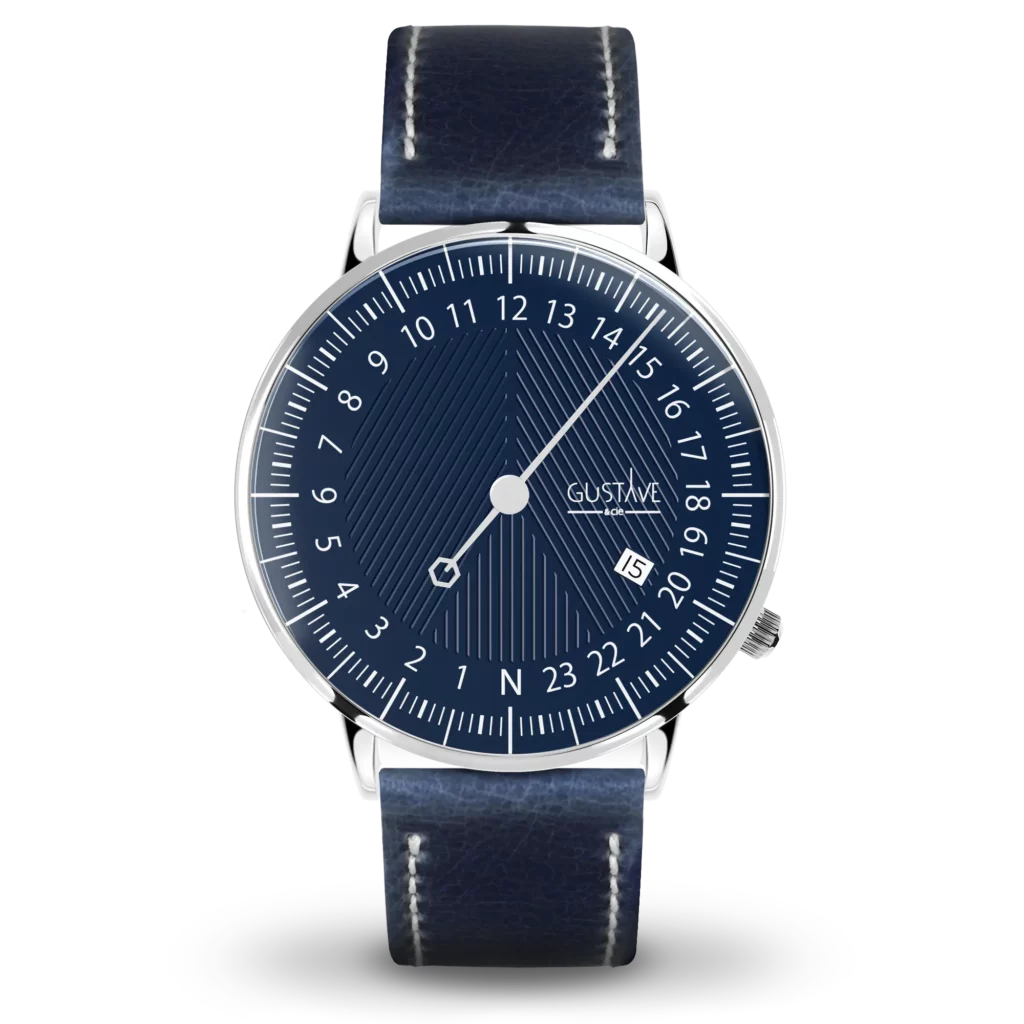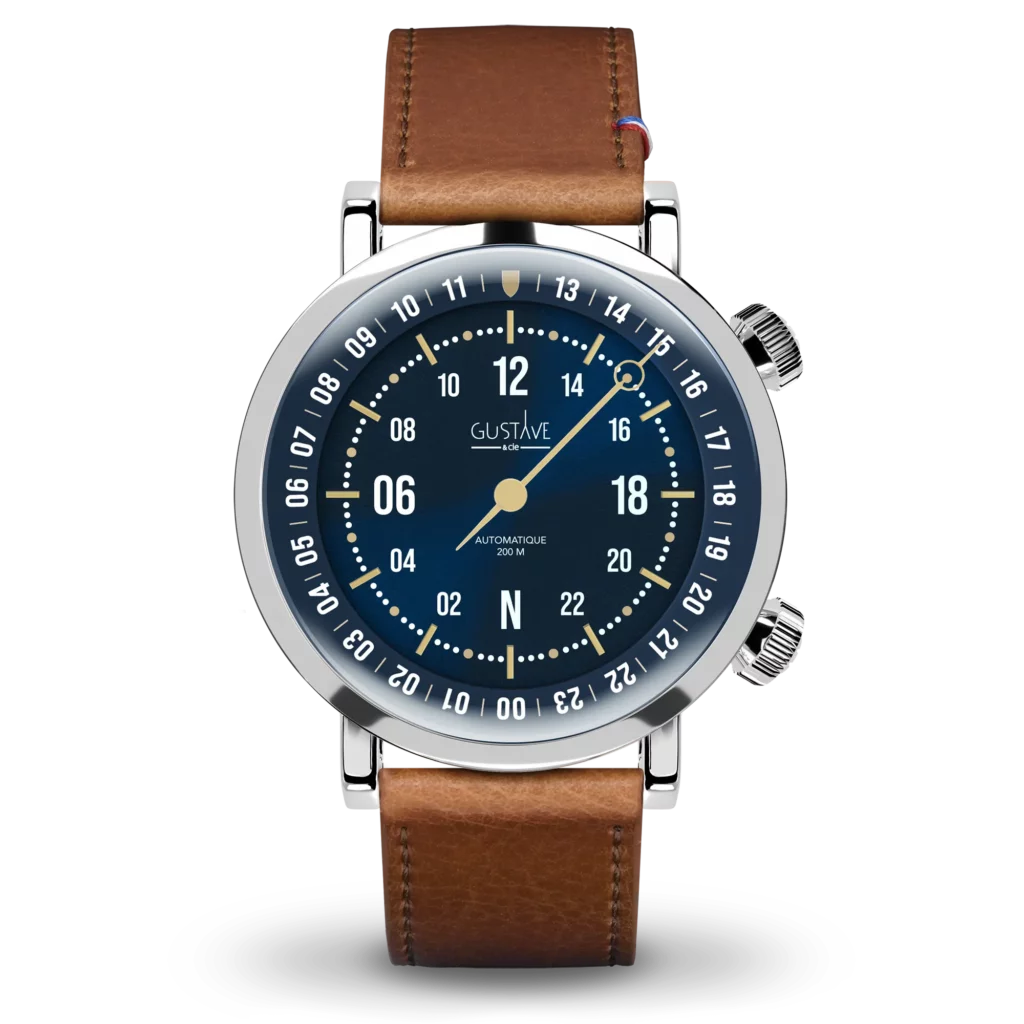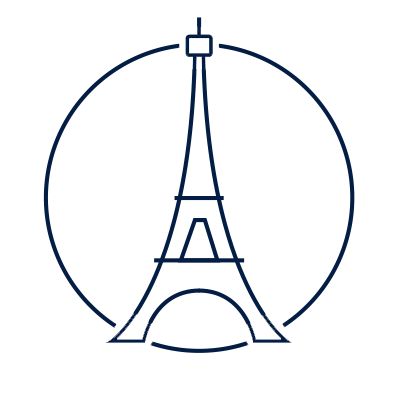Quartz and mechanical movements, operation and differences?
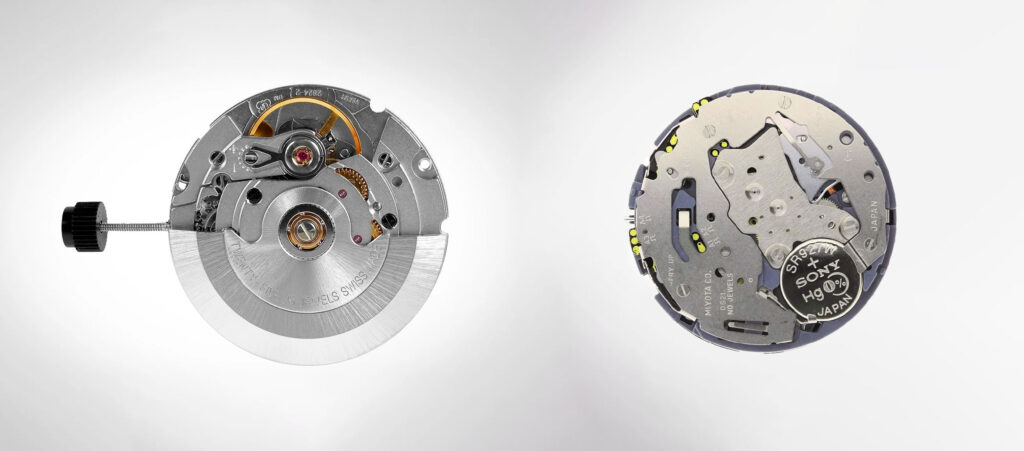
Today, in the world of watchmaking, there is a multitudes of watch movements. The movement, also called caliber or mechanism, is the part that allows the watch to tell the time. The best known and above all the most widespread mechanisms are undoubtedly mechanical movements and battery-powered movements, also called quartz. Before diving into the details, let's discover together how a watch works in general.
How does a watch work?
Regardless of the mechanism, all watches work in a similar way, only the energy source and the nature of the components differ. To better understand all this, we have prepared a simplified diagram.
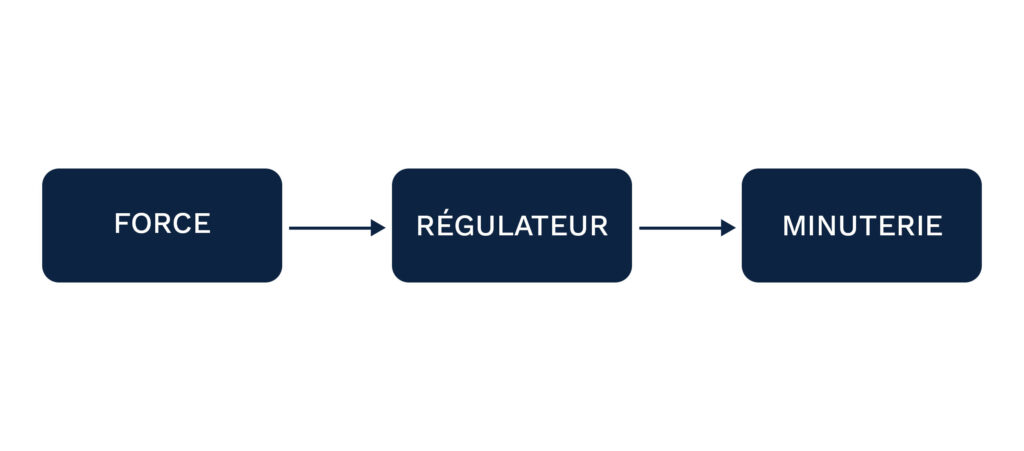
Strength : This force is what will power the entire movement. This is the energy source and aims to supply the regulator with constant energy.
The regulator : To be precise, your watch must have a constant. The goal is to cut the force/energy into small sections. The more regular the cutting, the more precise your watch will be. This rhythm produced by the regulator is then transmitted to the timer.
The timer : In watchmaking jargon, this is the part of the watch which, with different gears, transmits the rhythm produced by the regulator to the rest of the movement in order to move the seconds, minutes and hours hand, all to show you the time.
Now that the main points have been covered and the general functioning is understood, let's see together what differs between these two mechanisms: quartz and mechanical.
How a quartz or battery-powered movement works
As you will have understood, a quartz movement has force (source of energy) a battery. This battery generates energy which is then sent to the regulator. The regulator takes the form of a small electronic card equipped with circuits which are responsible for transmitting and managing this energy.
Le regulator, also called electronic oscillator, is a Quartz crystal. This crystal is called piezoelectric, that is to say, once electrified, it produces a frequency of vibrations.
This frequency is constant and is of the order of 32 Hz (or 768 vibrations per second). Once divided by a frequency divider, we then obtain a frequency of 32 Hz. In everyday language: the energy has been divided into sections of one oscillation per second.
This energy is transmitted to a stepper motor which, with each oscillation, moves the needle once per second.
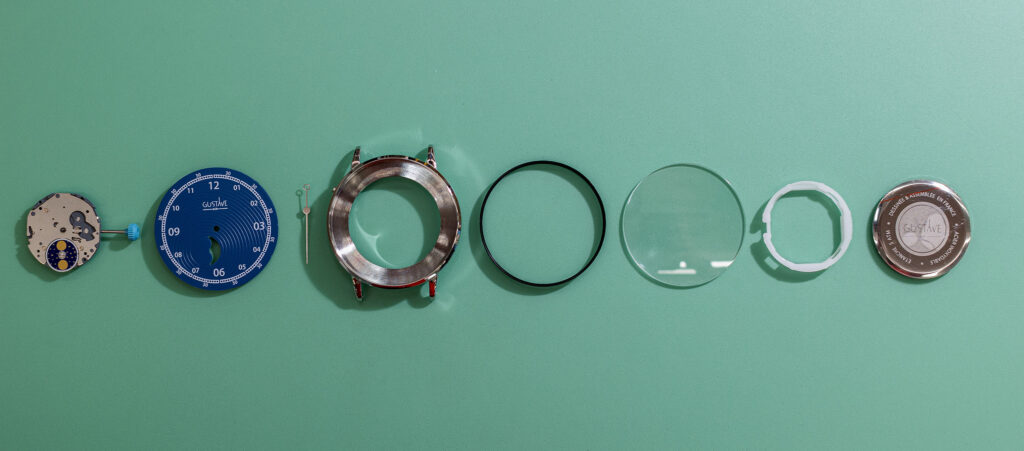
How a mechanical movement works
Unlike the quartz movement we find the movement mechanical. THE operation of the movement remains the same but in a mechanical movement there is no electronic circuit, but only a set of cogs and mechanical elements. Let's return to our simplified diagram:

Strength : On a mechanical movement, the force is provided by a spring. Also called "barrel”. This spring, once compressed, aims to return to its initial position. Trying to relax and get back into shape. In this way, it will release energy and drive in its course cogs which transmit this energy to the regulator.
The regulator : In a mechanical watch, the regulating organ is made up of the balance spring: it is the heart of the movement. Its role is to “cut the energy” into small sections, at a given pace. This rhythm is obtained thanks to the oscillation of the balance spring. This obtained frequency is then transmitted to the timer.
The timer : The energy cut into regular sections is received in different cogs, each linked to a needle. One being linked to the other, we therefore have the seconds wheel which drives the minutes wheel and which, in turn, turns the hours wheel. (Please note, depending on the movements, we can find different assemblies and transmission chains).
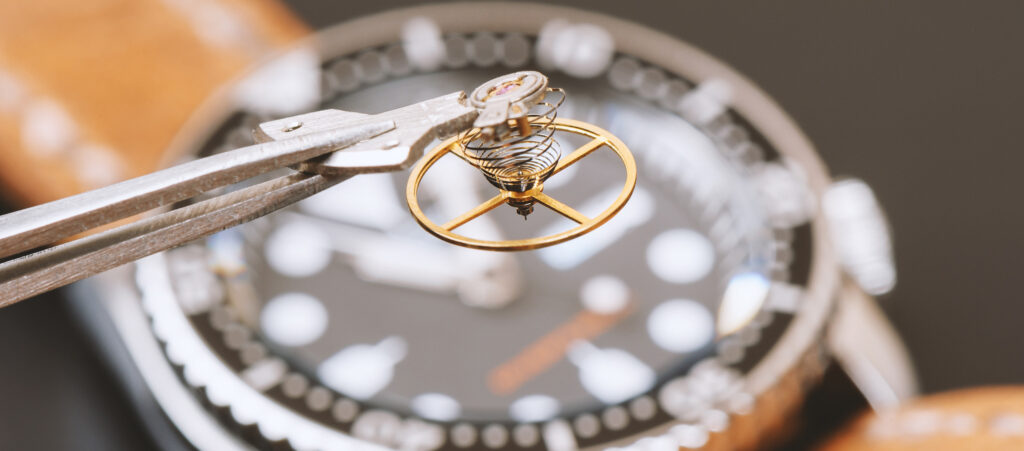
Specifications and technical details
The spiral balance can produce different frequencies due to its swing and construction. With each impulse, the pendulum comes oscillate in one direction, then the other. It is therefore two alternations in a single oscillation, hence the famous tick (go) and tac (return) so particular to mechanical watches.
On a mechanical watch, the frequency the most common is 4Hz or 4 vibrations per second, which gives us 28 vibrations / hour. Depending on the movements and the quality of these, we find other frequency levels such as:
21 vibrations/hour,
28 vibrations/hour,
or 36 vibrations/hour.
Generally speaking, the higher the frequency, the more accurate the watch will be.
Wear and maintenance
All components of a mechanical watch experience friction. In order to limit them, we use natural and synthetic rubies. These rubies house in their center the axes of the different parts and cogs. To further limit friction, an oil is applied to these rubies and to certain components of the movement to allow the different elements to rotate more freely.
On the other hand, this oil can oxidize and solidify over time and thus reduce the reliability of the watch and damage the components. For this, every 5 years, a service is recommended, in particular to renew the joints and sealing.
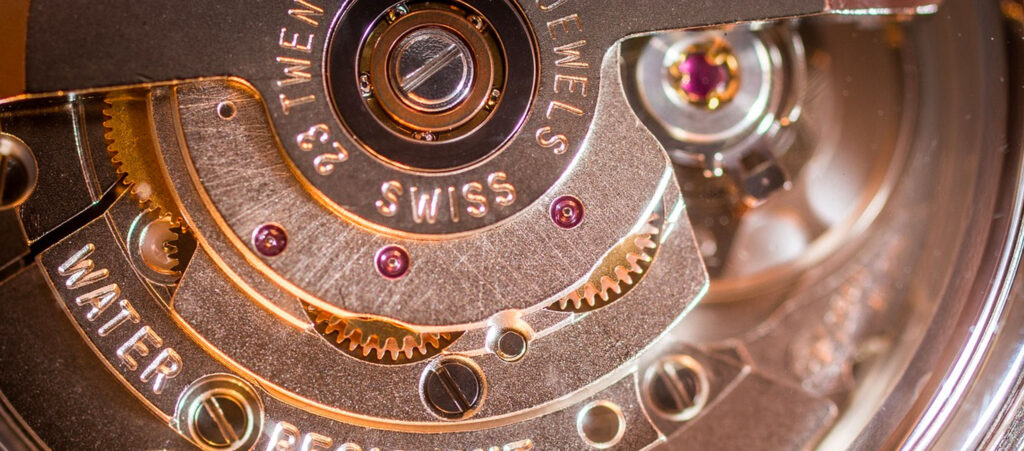
Mechanical movement and quartz movement, how to distinguish them?
If you are a beginner in the field of watchmaking then sometimes it is not so easy to differentiate between a mechanical watch and a quartz watch. This is why we are going to present to you some techniques that will allow you to distinguish the mechanism hidden in your watch without needing to open it.
The second hand
If there is a second hand on your watch, look at how often it moves. If it is only once per second and the hand “beats the second”, then it is most certainly a quartz watch (apart from a few exceptions such as the mechanical movement with dead seconds).
If your hand has a higher frequency and it seems to “slip” on the dial, it is surely a mechanical watch! (apart from a few exceptions).
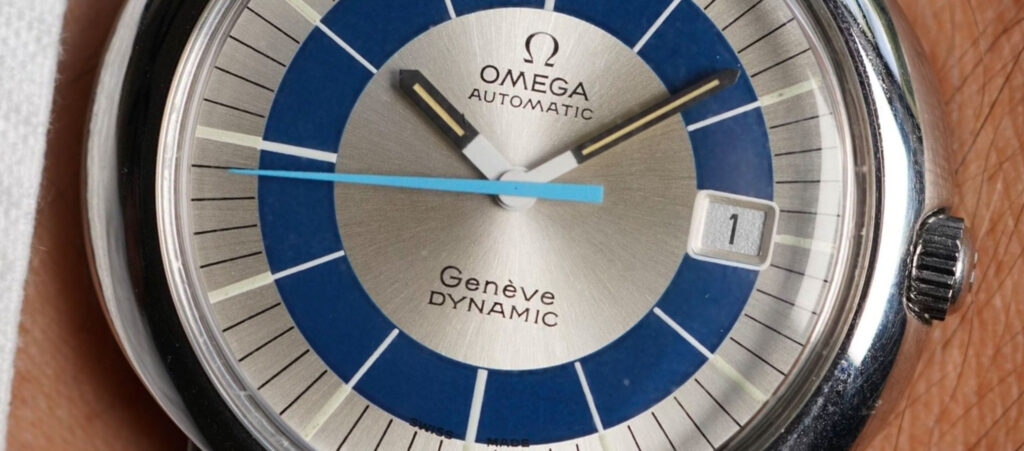
The reassembly
Your watch is equipped with a crown, this acts differently depending on the mechanism. If your watch is Quartz, this crown will only be used to set the time or adjust the date.
For a mechanical watch, you can wind your watch by turning the crown clockwise. You will hear “tics” with each rotation of the crown.
This is a simple way to tell the difference between a Quartz watch and a watch equipped with a manual or even automatic mechanical caliber.
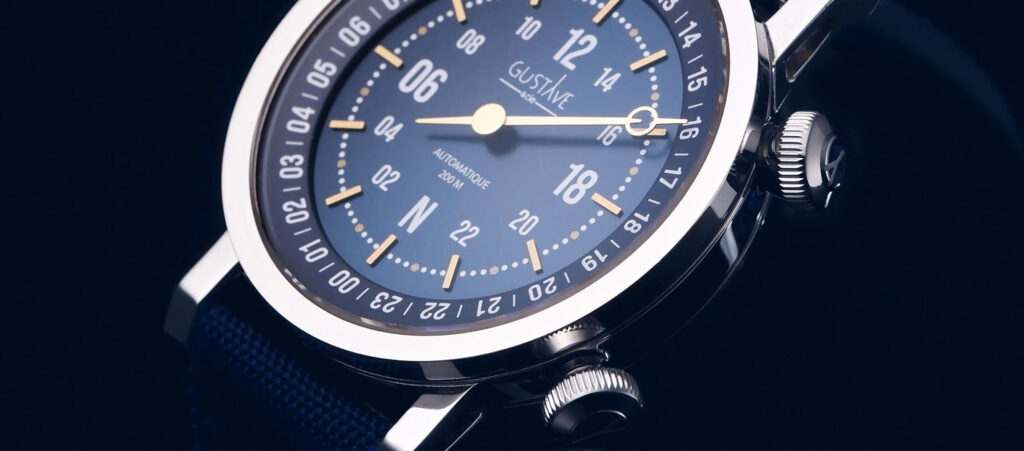
The noise
As seen a little earlier in the article, your mechanical watch emits a sound with each oscillation: the famous TIC Tac. Place your ear against the back of it and you will have a nice noise if your timepiece is mechanical. In addition, if your watch is automatic you will probably hear the oscillating weight when moving the watch.
If not, it's probably a quartz watch.
Inscriptions
On the vast majority of watches, is written on the dial the type of onboard movement. If there is an inscription mentioning the movement you will be sure, otherwise you will have to look at the caseback (back of the watch) in search of information.
Some case backs are also engraved with the words “automatic”. If the bottom is glass and it offers a view of the movement. You can be sure that it is a mechanic.
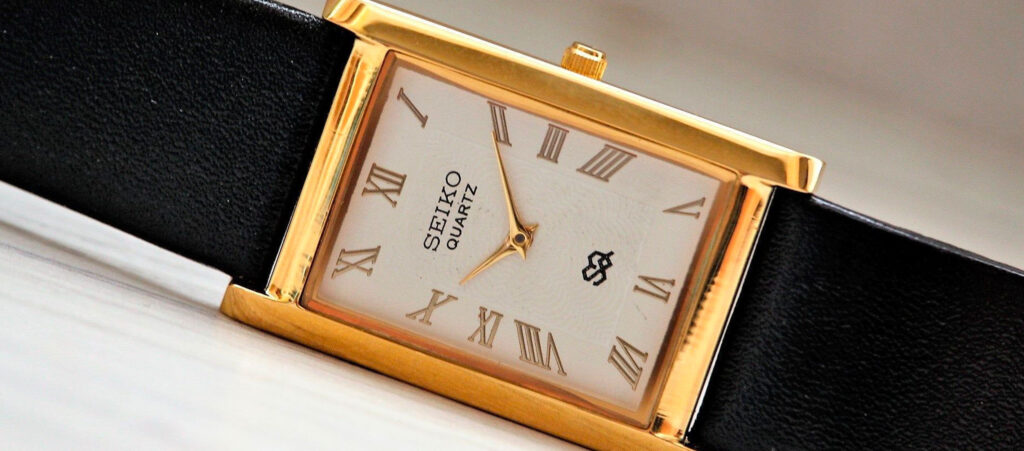
Autonomy
A mechanical watch generally has 42 hours of autonomy: called power reserve. The power reserve is the time it will take for the spring to recover its initial shape and therefore release all of its energy.
Once the power reserve limit is reached, the mechanical watch stops. All you have to do is wind the movement with the crown and it will start again.
So, to recognize a mechanical movement, simply leave your watch on a static location. If it still works after 4-5 days, it is certainly a Quartz watch (apart from a few exceptions, some watches have significant power reserves of more than 5 days).
A quartz watch has several months or even years of autonomy.
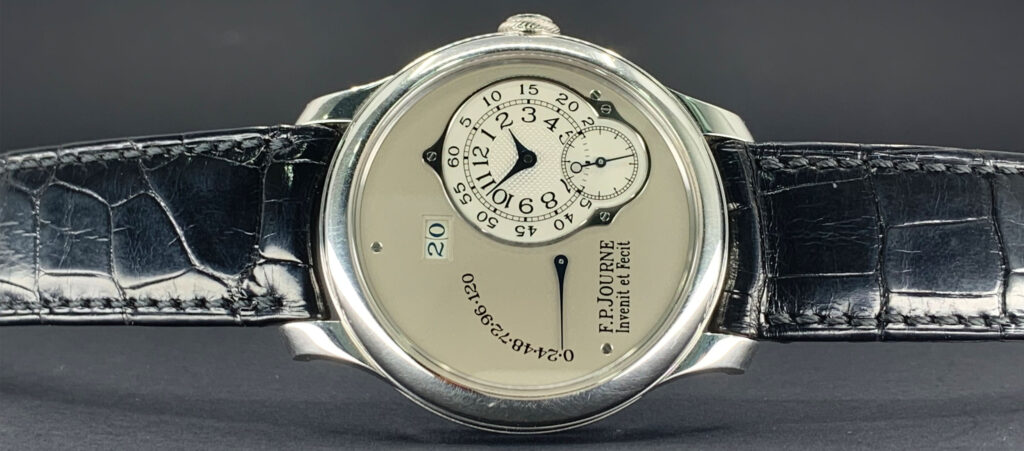
Advantages and disadvantages of these 2 types of movement.
Quartz and mechanical movements are two very different worlds in watchmaking and each movement has its advantages and disadvantages. Let's discover these together to help you make the right choice.
The advantages and disadvantages of a quartz watch
As you will have understood, the advantage of a quartz watch is that it is much more precise than a mechanical watch. In addition, it works for months or even years without ever stopping and without any maintenance.
The price is also a strong point of these mechanisms. Nowadays, they are very inexpensive and allow brands to offer attractive entry-level timepieces with more or less advanced complications (date, chrono, Moon phase, etc.).
The big negative point of these Quartz movements lies in their lifespan. The first battery will last about 3 years, the second 2 then 1 and so on until it reaches just a few months. Your timepiece becomes obsolete in about twenty years unless you change said movement.
It is very rare to be able to maintain an entry-level quartz movement, or at least it is easier to change the entire movement with a new one.
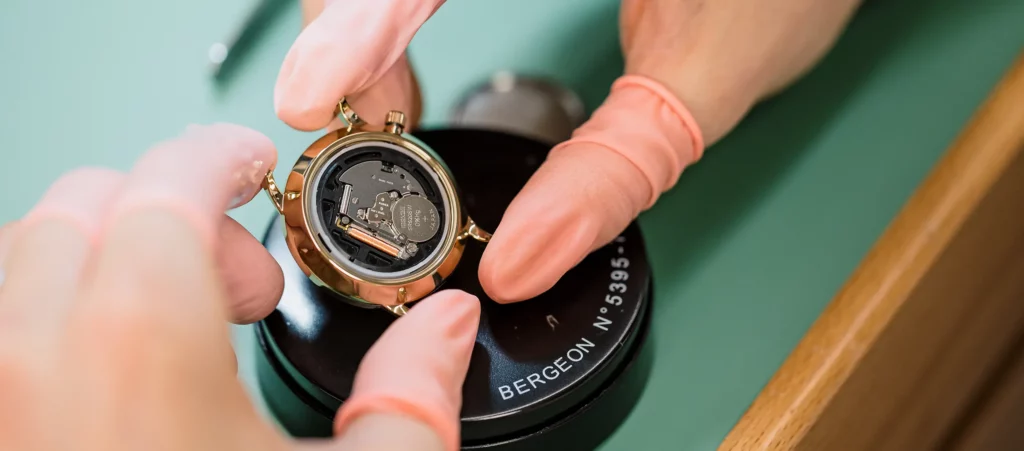
The advantages and disadvantages of a mechanical movement
Unlike quartz watches, the disadvantage of mechanical watches is that they are not as precise, at least, ignoring the latest technological advances like that of Zenith with its Defy Lab Zenith.
The mechanical watches that you come across on a daily basis oscillate between -10 and +10 seconds per day for the most picky of them.
One of the advantages of a mechanical watch is obviously the artisanal side, the passion for the object. You are the source of power for your watch, either by winding the mechanism or by moving if you have a self-winding watch.
Without you, your mechanical watch does not live, it needs us as we need it. The more we cherish it, the more faithful it will be to us in terms of its functioning and longevity. Indeed, a mechanical watch is imperishable; if it is well treated and maintained, it will last a lifetime.
In terms of price, this is no longer a disadvantage these days because we find them at the entry level for a few hundred euros more than a quartz watch. They are also found in fine watchmaking at several thousand euros.
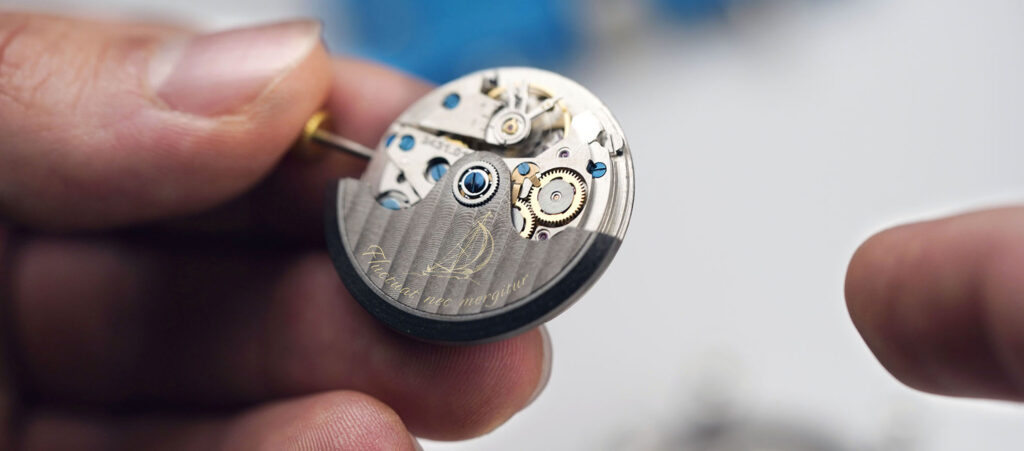
Which movement should you choose?
Quartz or mechanical? That is the question ! Unfortunately, deciding isn't always easy, which is why we're here for you.
If you are looking for a watch that is practical, functional and precise, then a quartz movement is for you. You don't want to bother with a watch that needs to be wound, maintained and set to the correct time once it hasn't been worn for a week. You will certainly opt for a quartz watch which is more precise than a watch requiring as much attention as a mechanical watch.
Lovers of mechanics and watchmaking enthusiasts find themselves in a mechanical watch, more elaborate and more lively than a quartz watch.
But that's not all, your budget will also be a determining factor. Choose one, consider your desires, and who knows, invest in the watch that makes you dream.
To conclude:
Quartz: Simple operation, low maintenance, almost perfect time keeping and affordable price.
Mechanics: Craftsmanship, attention to detail, passion for movement, investment, maintenance and pampering.
OUR QUARTZ AND AUTOMATIC COLLECTIONS
SOURCES:
- Photo Omega Geneva: Watch forum
- Seiko tank quartz photo: Watch forum
- Photo FP Journe Octa : Watches.de

